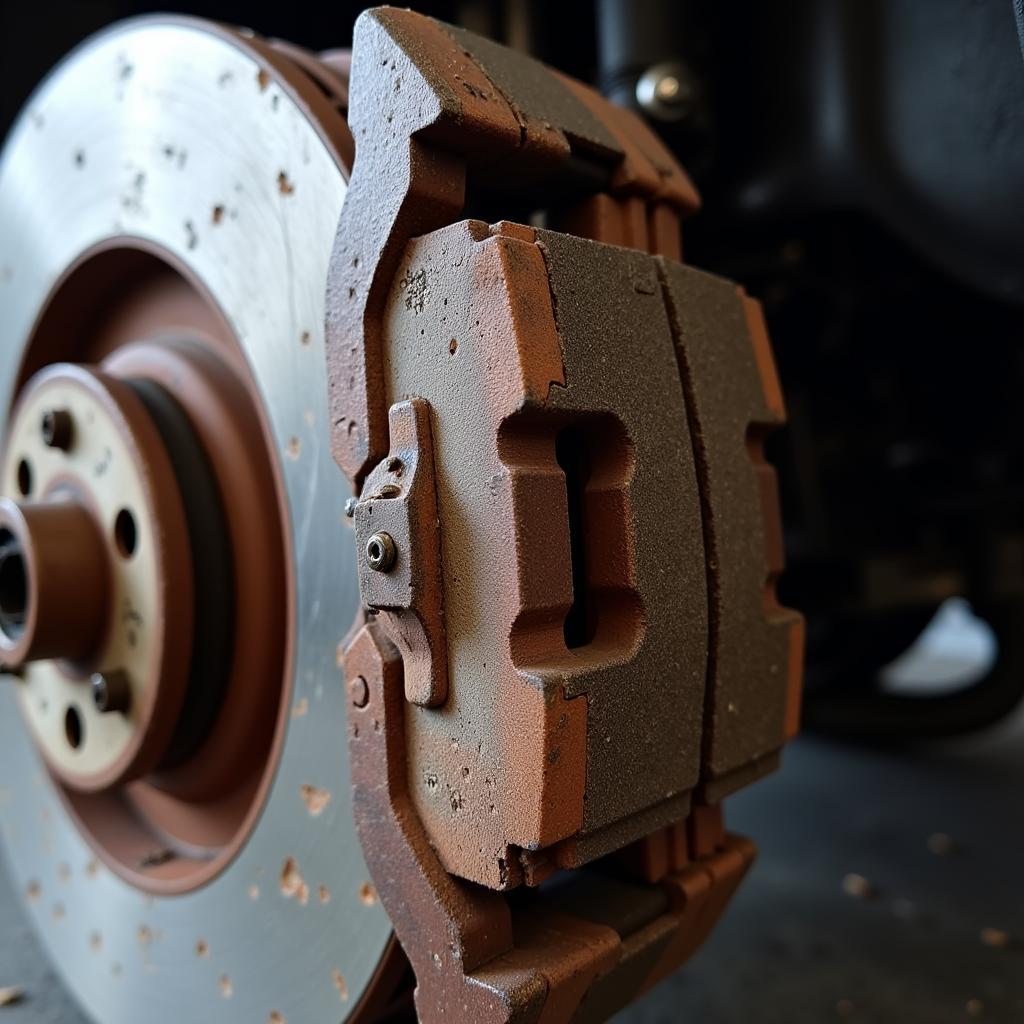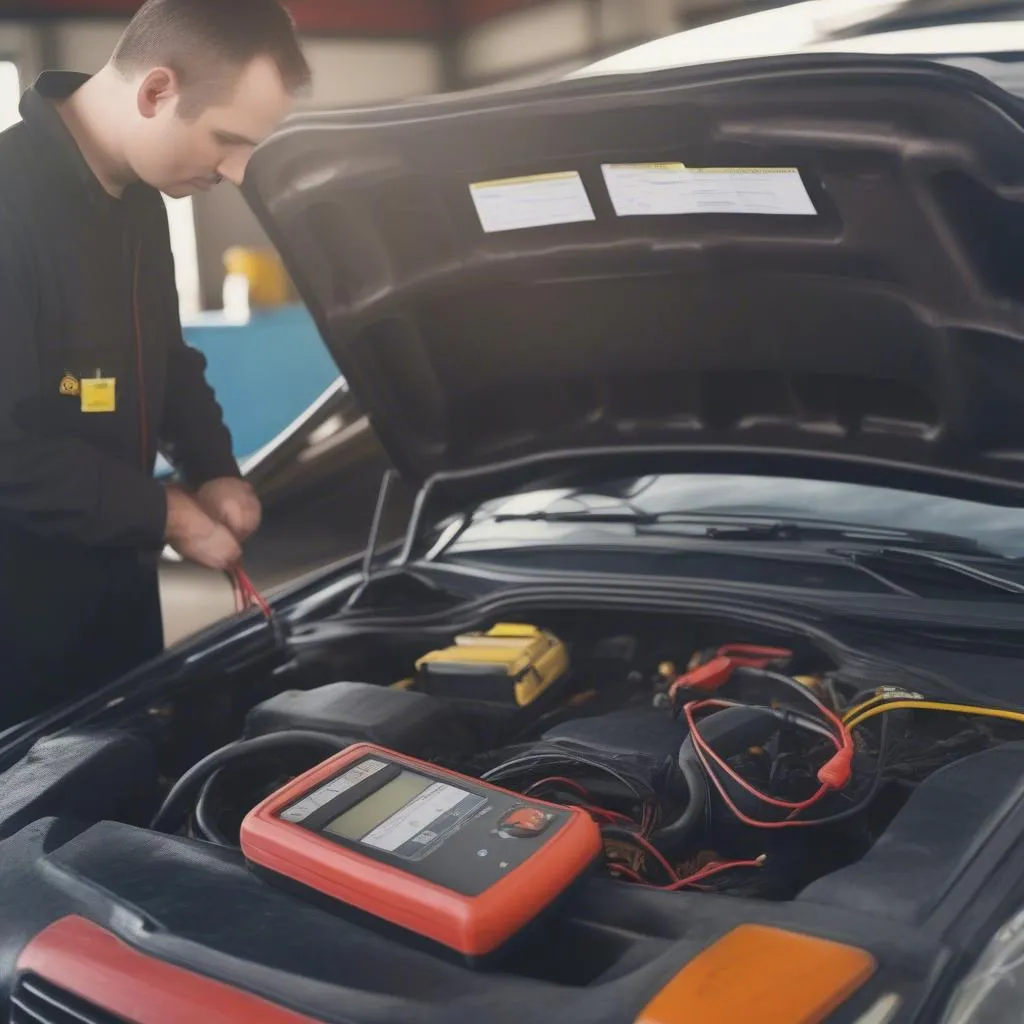A blinking brake warning light on your Subaru dashboard can be an unwelcome sight. While it might induce a moment of panic, understanding the potential causes and solutions can help you address the issue effectively. This article will guide you through the common reasons behind a flashing Subaru brake warning light and provide insights into resolving the problem.
Why is My Subaru Brake Warning Light Blinking?
Your Subaru is equipped with a sophisticated system of sensors and electronics designed to keep you safe. When the brake warning light blinks, it’s the car’s way of communicating a potential issue within this system. Let’s delve into the most frequent culprits:
1. Low Brake Fluid Level
One of the most common reasons for a blinking brake light is low brake fluid. Brake fluid is the lifeblood of your Subaru’s braking system, and a leak or low fluid level can significantly compromise braking performance.
What to do: Immediately check your brake fluid reservoir. If the fluid level is below the “MIN” mark, it needs to be topped up. However, it’s crucial to find out why the level is low in the first place. A leak requires immediate professional attention.
2. Worn Brake Pads
Your Subaru’s brake pads are designed to wear down over time. When they reach a certain thinness, a sensor embedded within the pad triggers the blinking brake light, signaling it’s time for replacement.
What to do: Inspect your brake pads for wear. If they appear thin or you hear a grinding noise while braking, it’s time to replace them. It’s recommended to have your brake rotors inspected and potentially resurfaced simultaneously.
 Worn Brake Pads on Subaru
Worn Brake Pads on Subaru
3. Malfunctioning ABS System
Your Subaru’s Anti-lock Braking System (ABS) is crucial for maintaining control during hard braking. If the ABS system encounters an issue, often due to a faulty sensor, the brake warning light might blink.
What to do: While a blinking brake light due to a potential ABS issue might not be as urgent as low brake fluid, it’s still crucial to have it diagnosed by a qualified Subaru technician.
4. Faulty Brake Light Switch
The brake light switch activates your brake lights when you press the pedal. A malfunctioning switch can confuse the car’s computer, leading to a blinking brake warning light even if your braking system is functioning normally.
What to do: A faulty brake light switch usually requires replacement. While it’s a relatively simple fix, it’s best left to a professional.
 Subaru Brake Light Switch Location
Subaru Brake Light Switch Location
5. Electrical Issues
Like any modern vehicle reliant on complex electronics, Subarus can experience electrical glitches. A loose connection, corroded wiring, or a failing sensor can trigger a range of warning lights, including the blinking brake warning light.
What to do: Diagnosing electrical issues requires specialized equipment and expertise. It’s best to take your Subaru to a qualified technician who can pinpoint and resolve the problem.
How to Reset the Brake Warning Light
While resetting the brake light might seem tempting, it’s essential to understand that this action doesn’t fix the underlying issue. If the light continues to blink after addressing the potential causes mentioned above, further diagnosis is necessary.
Word of Caution: Never ignore a blinking brake warning light. Addressing the issue promptly ensures your safety and prevents potential damage to your Subaru’s braking system.
Frequently Asked Questions
1. Can I drive my Subaru with a blinking brake light?
It’s highly discouraged. While driving short distances to a mechanic might be possible in certain situations, a blinking brake light indicates a potential issue that could compromise your safety.
2. How much does it cost to fix a blinking brake warning light?
The cost varies depending on the underlying cause. Simple fixes like topping off brake fluid or replacing a brake light switch are relatively inexpensive. However, more complex repairs involving the ABS system or electrical components can be more costly.
3. How often should I check my Subaru’s brake fluid?
It’s good practice to check your brake fluid level at least once a month. Additionally, inspect it whenever you check your tire pressure.
4. Can I add any brake fluid to my Subaru?
No. Using the incorrect type of brake fluid can damage your Subaru’s braking system. Always refer to your owner’s manual for the recommended brake fluid type.
5. What is the difference between a blinking and solid brake warning light?
A solid brake light typically indicates that the parking brake is engaged. A blinking brake light, on the other hand, usually signals a more serious issue within the braking system.
Conclusion
A blinking brake warning light on your Subaru should never be ignored. By understanding the common causes and taking appropriate action, you can ensure the safety and longevity of your vehicle’s braking system. Regular maintenance and timely repairs are key to a safe and enjoyable driving experience.


